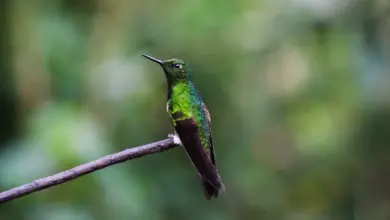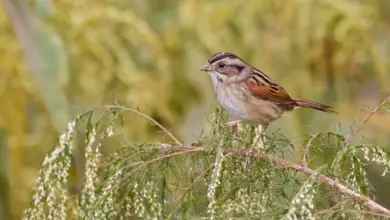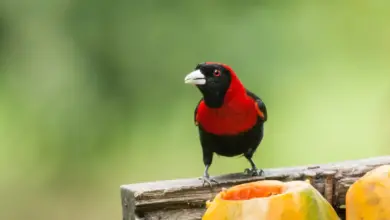Breeding Muscovy Ducks: What You Must Know
Muscovy ducks are an important source of meat production worldwide/ If you are planning on breeding muscovy ducks as a small-scale business, read this guide to learn what to do.
Known for their unique appearance, Muscovy ducks have been kept for food and companionship for thousands of years.
Despite being a species of tropical waterfowl, Muscovies do well in captivity and have been readily domesticated.
In fact, they are one of the easiest duck species (or goose, depending on your standpoint) to raise yourself.
This guide will explore what is required to breed a flock of your own Muscovy ducks successfully.
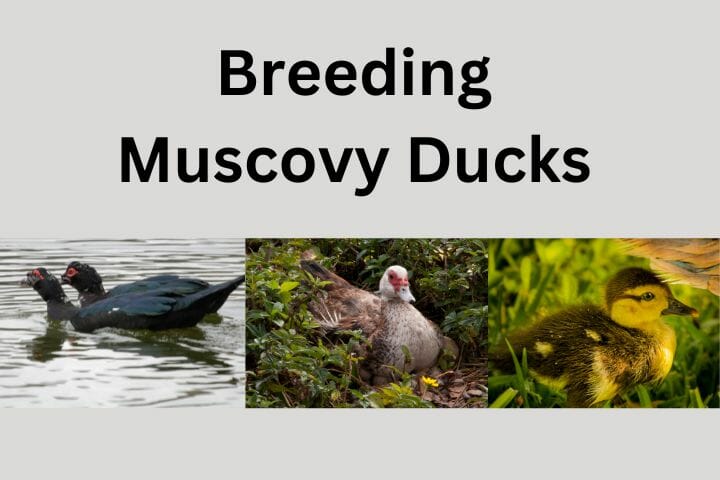
Are Muscovy Ducks Purebred?
Muscovy ducks are a purebred species. They haven’t been “cultivated” by selective breeding, despite the common misperception about them.
In the wild, Muscovy ducks are found in Central and South America.
They are large, streamlined, and efficient flyers. Muscovies nest in tree cavities in close proximity to clean water.
Due to their large size, these ducks have been domesticated for egg and meat production. Certain traits have been selected, such as increased muscle mass.
Can Muscovy Ducks Breed With Other Ducks?
Well, yes and no.
But before we jump into whether Muscovy ducks can breed with other ducks, let’s remind ourselves of a basic science lesson:
What is a species?
A species is a group of organisms that can successfully interbreed and produce fertile offspring.
“But Jack..” I hear you ask, “what does this have to do with Muscovies breeding with other ducks?”
Muscovy ducks can breed with other ducks. However, the offspring procreated will not be fertile.
In other words, the offspring is a sterile intergeneric hybrid.
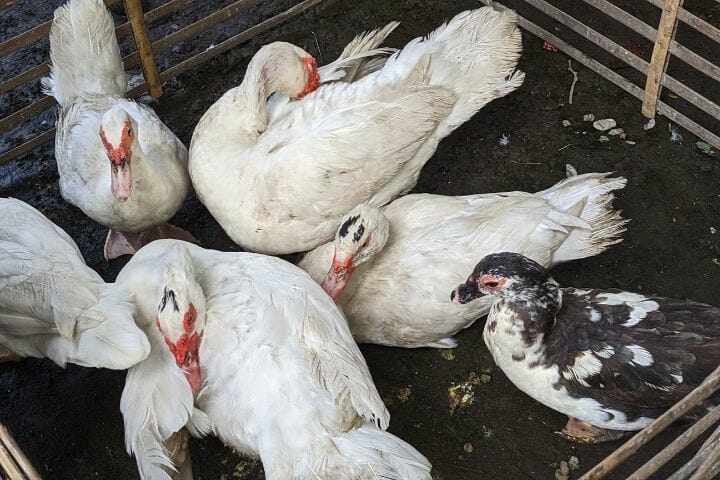
What Is A Sterile Duck?
Okay, so your Muscovy duck mated with another species of duck and produced offspring.
Because of the two different species’ interbreeding, the offspring will be sterile and unable to produce any offspring of their own.
These are known as mule and hinny ducks.
A mule is a Muscovy drake interbred with a common domesticated female. A hinny is a common domesticated drake interbred with a muscovy female.
Globally, one of the most popular breeding pairs is between Muscovy ducks and Mallard ducks. The result is a Moulard.
Moulards play an important role in meat production for communities worldwide. Artificial insemination is used to create them.
Can A Sterile Duck Still Lay Eggs?
Although a sterile duck will not be able to breed and have offspring, female ducks are still used for egg production.
In fact, some people prefer using sterile Muscovy ducks in egg production, as there is the possibility of eggs becoming fertilized is very little.
The eggs of a purebred Muscovy and a mule duck look remarkably similar. Both purebreds and mule ducks have medium-sized, cream-colored eggs.
If a female Mallard has been inseminated by a Muscovy drake, she will typically lay a larger clutch of eggs.

Can I Interbreed Any Duck Species Together?
There are two main groups of domestic duck classifications: Muscovy ducks and Common ducks.
Common ducks have been domesticated from the wild Mallard (Anas platyrhynchos). Most domesticated ducks across the world fall within this category.
Pekin, one of the most widely consumed duck species on our planet, is a common duck species.
Abacot Ranger, Ancona, Blue Swedish, Buff, Campbell, and Indian Runner are all species of common ducks distributed across the globe.
As common ducks are genetically similar and have a shared ancestry, it may be possible to interbreed two common ducks to create fertile offspring.
Muscovy ducks are genetically distinct from Mallard-derived species. Muscovy ducks like to breed with other Muscovies.
However, if no other Muscovies are present, a Muscovy duck will breed with any other breed of duck that is present.
So, although Muscovy ducks will mate with any common duck species in a flock, the offspring will almost definitely be a sterile duck.
Only a Muscovy drake and a Muscovy hen can breed together to produce fertile offspring.
In case you are trying to breed two muscovy ducks, you might want first to learn the differences between males and females.

At What Age Do Muscovy Ducks Start Breeding?
Male and female Muscovies share many differences.
One notable difference is the age at which the sexes reach sexual maturity.
For females, sexual maturity is achieved around 27 – 28 weeks. Males, on the other hand, are later bloomers.
They will not reach sexual maturity until they are at least 29 weeks of age.
Unlike other species of birds, Muscovy ducks do not display pronounced courtship displays to attract a mate. They will, however, wag their tails and raise their crest feathers on their head.
In the wild, Muscovies will nest in trees, away from ground-dwelling predators.
If you raise Muscovies, ensure an elevated nest box within an enclosed area filled with a layer of dried grass or sawdust.
A female will lay a clutch of up to 19 eggs in her nest box and guard them day and night.
The only exceptions where she will leave her clutch unattended would be for feeding, drinking, and pooping.
Breeding Season And Egg Laying In Muscovy Ducks
The breeding season for domesticated Muscovy ducks typically occurs from late Spring to early Fall.
During this time, days are often longer and warmer, with a plentiful food supply.
During the summer months, ponds and meadows are teeming with invertebrate life – one of the Muscovies’ favorite food items.
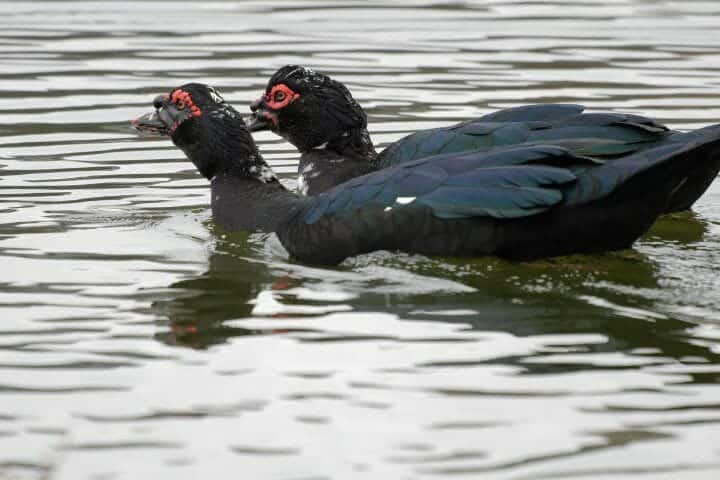
In fact, Muscovies are a great and natural way of reducing pest species, such as mosquitos, in your garden.
Whilst egg laying occurs year-round, most Muscovy breeding occurs during the spring months.
Once a female begins laying eggs, she can start to breed successfully with males. A female muscovy does not need a male to be able to lay eggs.
Sexual intercourse for Muscovy ducks is complex.
Unlike many species of birds, Muscovy drakes have a penis, and Muscovy hens have a vaginal canal.
The vaginal canal is corkscrew-shaped in a clockwise direction and is a labyrinth of twists, turns, and dead-ends!
The female can misdirect any unwanted sperm to false pockets to avoid fertilization.
If environmental conditions are not right, a female can store sperm for up to two weeks in her vaginal canal.
She will wait until the external environment is more accommodating before allowing the sperm to reach her egg.
How Often Do Muscovy Ducks Mate?
Within the breeding season, a Muscovy duck can breed up to four times.
Typically, she will remain with the same partner during the season. This is known as seasonal monogamy.
The female may mate with a different drake the following season.
If eggs are fertilized, they will typically take around 35 days to develop and hatch. Other common duck breeds normally take 28 days for their eggs to develop.
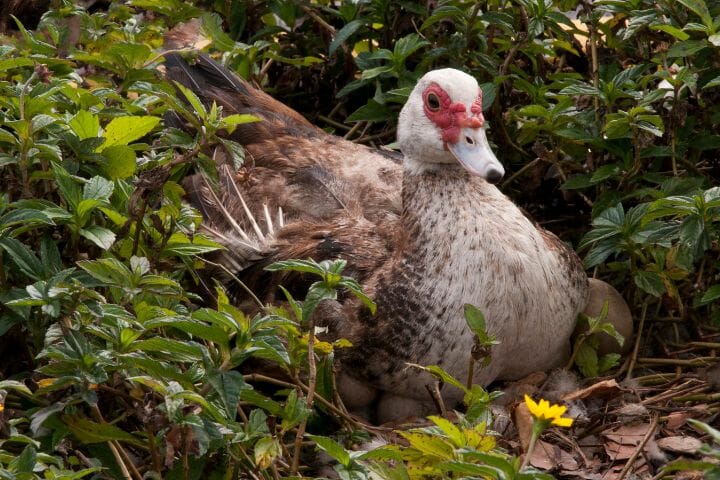
How To Breed Muscovy Ducks
So, we’ve established the basics of the breeding behaviors of Muscovy ducks.
Now, into the nitty gritty details of how to get the best results if you want to breed Muscovy ducks.
Space
First and foremost, you need to consider space. You do not want to overload an area with ducks, as it will produce cramped and unsanitary conditions.
Likewise, you do not want many hens to a single drake in a confined area.
This will increase aggression and hence the risks of fights breaking out. This is especially common when Muscovy hens start getting broody.
As a minimum, I would suggest at least 15 square feet per duck in a nesting area, as well as a free-range run.
Space is incredibly important. If too small, your Muscovies may be too stressed to lay any eggs, and you will not be able to breed successfully in the first place.
Climate
Despite originating in tropical climates, Muscovy ducks are a hardy species.
While they prefer warmer climatic conditions, around 20 – 24 degrees Celsius (67 – 75 F), most Muscovies will be happy in almost any weather conditions.
I would, however, recommend some winter protection if your area is renowned for having prolonged cold snaps.
Winter protection can include indoor coverage – or at least a basic shelter with a roof. You may also want to increase the amount of protein they receive in their food.

Drake to hen ratio
So you have the right amount of space. Now, you need to decide how many hens and drakes you want.
To avoid over-breeding, you should aim for a 3:1 ratio of hens to drakes.
At a bare minimum, I would suggest one drake to 3 hens. However, if space is on your side, I would suggest at least two drakes and 9 – 10 hens.
A drake without enough females may become aggressive.
Nest boxes
I touched upon this point earlier, but nest boxes are incredibly important. You will need at least one nest box per female Muscovy.
Oftentimes, Muscovy hens like to nest together.
In fact, it isn’t uncommon for two hens to raise two clutches of chicks together. However, it is always better to provide more nesting boxes than not enough.
If females feel like they do not have a safe space, they will not sit on their clutch, and you will not be able to hatch Muscovy ducklings successfully.
Like us, female Muscovies like their privacy.
Within the breeding pen, keep nest boxes elevated and filled with either hay or sawdust. You may find that your hens may introduce feathers into their nest.
You can get creative with nest boxes. You can use old dog kennels, plastic boxes, old cupboards, and car tires.
Water requirements
Happy Muscovies are most likely to breed successfully.
Although Muscovies do not require as much water as other species, a clean water source is essential.
Muscovies use water for bathing, drinking, and cooling down.
Have a plan
This one isn’t necessarily about how to breed Muscovies but more about knowing what you want to do with them once you hatch ducklings.
At the end of a breeding season, a broody Muscovy can produce a lot of ducklings.
Muscovy ducks are meat-producing ducks in many parts of the world.
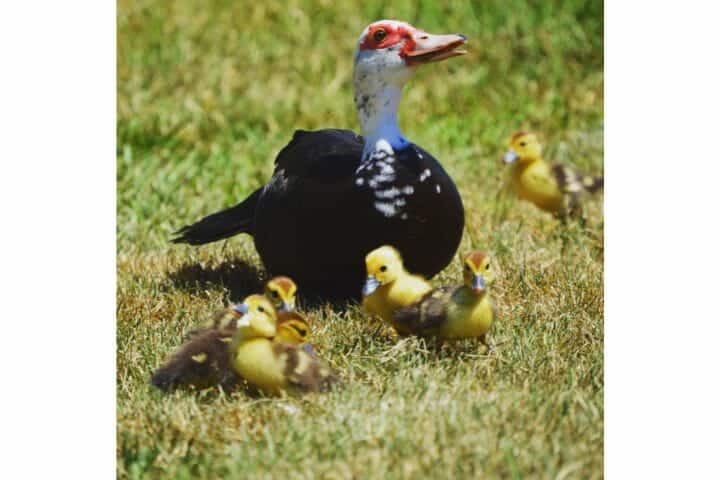
It sounds contradictory when talking about welfare and butchering. However, lots of ducks in a small space will lead to lower welfare standards and stressed ducks.
Sustainable, small-scale Muscovy meat production may be a way for you to keep welfare standards high and earn a profit on the side by selling the meat to local farmer’s markets.
Can Muscovy Ducks Be Wounded While Mating?
Generally speaking, both male and female Muscovy ducks are mild-mannered and have a great temperament.
Occasionally, however, aggressive behavior can occur. This is most notable in the breeding season when males compete for the right to mate with a female and females are broody.
Fights can also break out if you have too many Muscovies in a small space.
Muscovy ducks have claws on their webbed feet, which they typically use to grasp onto branches.
However, in times of conflict, they will not hesitate to use these claws in self-defense.
Males use aggressive wing flapping and pecking to keep rival males away.
During courtship, drakes can be somewhat rough with females. Males can hold on to the back of the female’s neck.
This is why you can sometimes see the caruncle extending around the back of the neck – it is a defense mechanism to avoid serious damage.
How Long Will A Mother Muscovy Duck Care For Ducklings?
Typically, Muscovy ducklings will stay close to their mother for around 10 – 13 weeks.
We refer to ducklings and other species of poultry as precocial. This means that they are born with feathers and are able to see, move and hear.
Unlike other species, especially mammals, which can take many months or years to become independent from their mother,
Muscovy ducklings reach independence relatively early.

Within the first couple of weeks, the mother Muscovy will teach her brood about foraging but will not feed her ducklings herself.
The Muscovy ducklings will primarily stay close to the mother for warmth and protection.
Frequently Asked Questions
What Is The Lifespan Of A Muscovy Duck?
Wild Muscovies average approximately 8- 12 years. They often fall prey to predation from eagles, snakes, alligators, raccoons, snapping turtles, and so on.
Do Muscovy Ducks Mate For Life?
Muscovy ducks are promiscuous; they will have more than one mating partner in their life. They change partners every season
How Many Babies Do Muscovies Have?
Unlike other egg-laying birds, they do not produce eggs all year round.
What Does It Mean When A Muscovy Duck Wags Its Tail?
You may also find Muscovies wagging their tail a lot during the mating season. Male muscovies do this in order to attract the females towards them.
Wrapping Up
Muscovy ducks are an important species for protein consumption across the globe.
They are a purebred species that can only produce fertile offspring within their own species, but not with other ducks or waterfowl.
Mule ducks, a hybrid between a Muscovy and a Mallard species, cannot produce fertile offspring of their own, but they can still lay eggs.
Important requirements to successfully breed Muscovies include adequate space, clean water, correct drake-to-hen ratio, and enough nest boxes.
Thank you for your time, and happy breeding!
Other Articles Of Interest
- Goose Information / Overview
- Photos of the Different Goose Species for Identification
- Species Index of Geese
References
Cornell College of Veterinary Medicine, W. Dean, 2016
Maine Birds, Reproduction, H. Wilson, Aug 2009


